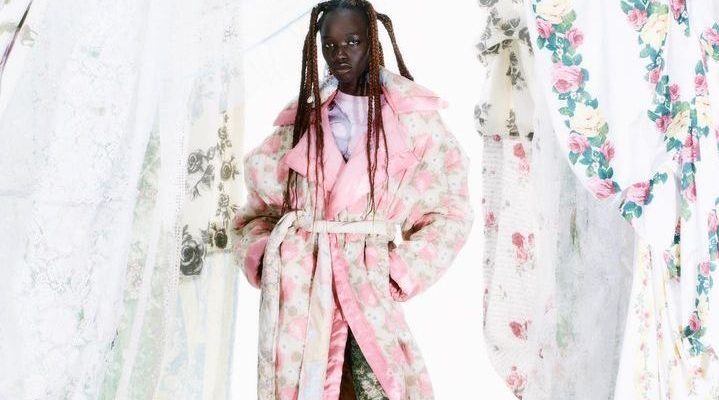Several brands now offer ranges of products in household linen upcycled. And the Swedish label, Rave Review is a pioneer in this practice. Other actors are increasingly interested in fabric scraps and other waste by transforming them into clothing and accessories. The goal? Reducing the mountains of waste that accumulate around the world, minimizing the use of new resources and trying to reduce the impact of the fashion industry on the environment.
A concept that conquered the fashion industry
Almost all waste, objects, and used materials can now constitute an exceptional raw material for brands wishing to favor circular fashion. Some have long since inscribed this practice in their DNA. This is the case of Rave Review, a Stockholm-based label founded in 2017, which offers a second life, much more sumptuous, to linens.
Essentially designed from sheets, the first collection of the designer duo at the head of the brand, Josephine Bergqvist and Livia Schück, did not go unnoticed, and was among the first of its kind to develop in the upcycling niche of home textiles. The goal is simple: to create clothes only from existing materials. And the concept pleases, and works, since the label is among the list of semi-finalists for the prestigious LVMH Prize. Bath towels, plaids, tablecloths, blankets, sheets, or even curtains: everything goes there, and is transformed into luxury clothes.
The success is such that the brand is gradually expanding the palette of these pre-existing raw materials, and today reuses everything that can be easily transformed into clothing, such as fabric scraps and dormant stocks. The label even teamed up with the carmaker Škoda at the end of 2022 to create clothing from used car parts, including seats and seat belts, and even more recently created a collection for Gucci as part of the Gucci Continuum project.
A practice that inspires others
Since the health crisis, the practice of upcycling has become more popular in the fashion industry, as in many other sectors, with the emergence of new players committed to more sustainable – and circular – fashion. The made in Belgium label Valalab has also entered the niche of transforming household linen into clothing, as has Les Récupérables, among the pioneers in France, which was forced to close its doors in the fall. 2022, but also the Patchworkers participative design workshop.
Long before the pandemic, Alexandra Hartmann, who shares her life between Paris and Copenhagen, decides to tackle noble and old fabrics, through her brand Hotel Clothes. Old curtains, tapestries, furnishing fabrics, artisanal embroideries, sheets, tablecloths, and other linens: fabrics sometimes dating back several centuries are transformed into clothes by hand. An initiative again intended to fight against waste and overproduction.

